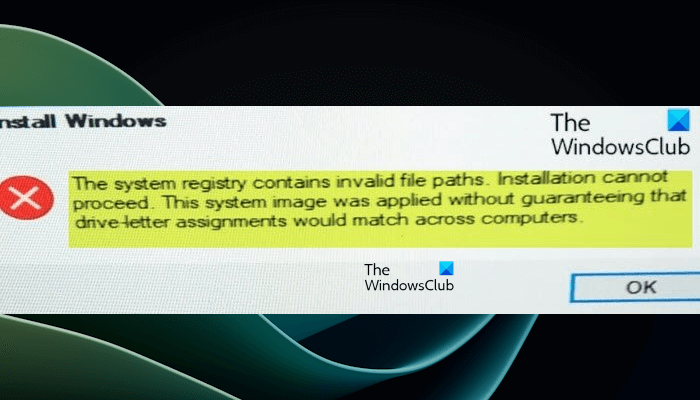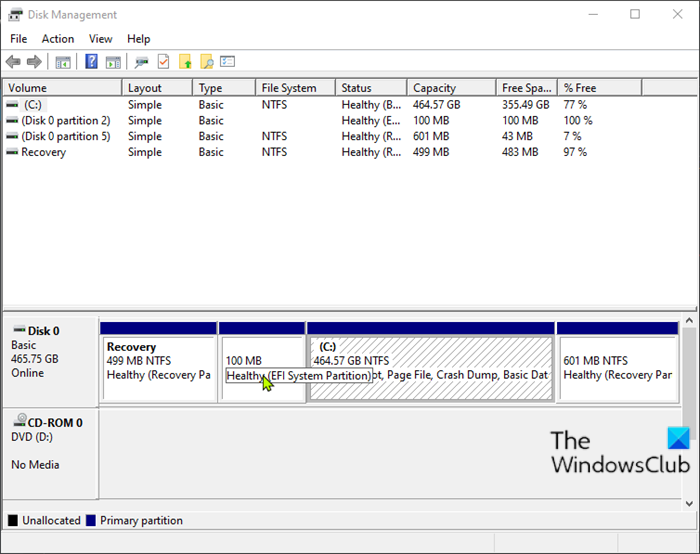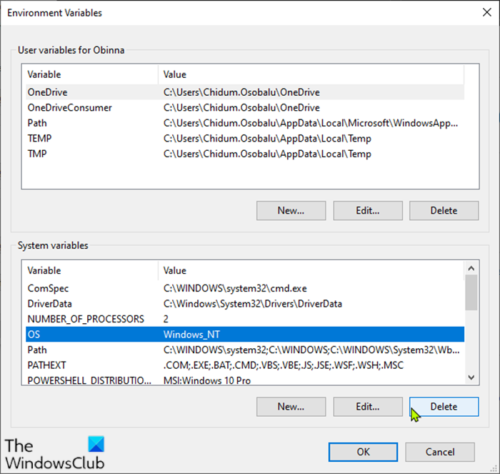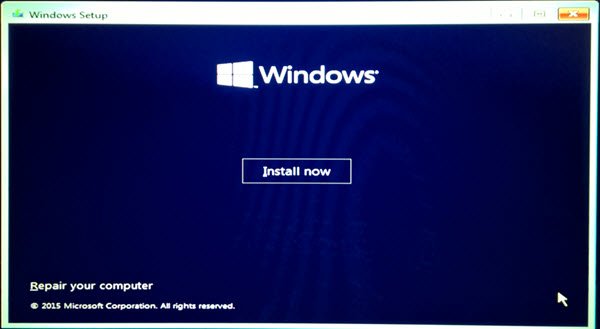If you’re encountering the error message The system registry contains invalid file paths when you attempt to upgrade from a lower version of Windows to a higher version of Windows, say from Windows 10 to Windows 11, then this post is intended to help you. You can try the solutions we will present in this post to successfully remediate this issue.
When you encounter this issue. you’ll receive the following full error message;
The system registry contains invalid file paths. Installation cannot proceed. This system image was applied without guaranteeing that drive-letter assignments would match across computers.

When this error prompt appears and the user clicks on OK, this leads to a restart and the following message appears:
Any changes made to the computer will be undone…
After half an eternity a restart occurs and after that the user will find his old Windows installed again.
The system registry contains invalid file paths
Use the following suggestions if you encounter the “The system registry contains invalid file paths” error while upgrading Windows, say from Windows 10 to Windows 11.
- Delete the drive letter of the System Reserved partition
- Delete some entries in System Variables
- Clean install Windows 11/10.
Let’s take a look at the description of the process involved concerning each of the listed solutions.
1] Delete the drive letter of the System Reserved Partition
Though the System Reserved Partition does not have a drive letter, it has been seen in some cases that a drive letter is assigned to the System Reserved Partition. You can check if your System Reserved Partition has a drive letter or not in the Disk Management tool. If your System Reserved Partition has a drive letter, delete the drive letter.

To delete the drive letter of the System Reserved Partition, do the following:
- Press Windows key + R to invoke the Run dialog.
- In the Run dialog box, type diskmgmt.msc and hit Enter to open Disk Management.
- In the window that opens, right-click on the System Reserved partition in the lower pane and select Change Drive Letter and Paths.
- In the dialog that opens, click the Remove button.
- Exit the Disk Management console and restart your PC.
On boot, retry the upgrade and see if the process will complete successfully without the error. Otherwise, try the next solution.
2] Delete some entries in System Variables

To delete some system variable entries on your Windows computer, do the following:
- Invoke the Run dialog box.
- In the Run dialog box, type control system and hit Enter to open the System Control Panel.
- In the System window, choose Advanced System Settings in the left column.
- In the System Properties window, click the Environment Variables button.
- Under System Variables, click Path.
- Now delete every entry except entries with the following path:
C:\Windows\system32
C:\Windows\Powershell
Once done, restart the PC, try the upgrade again, and see if the issue is resolved or not. If the latter is the case, try the next solution.
3] Clean install Windows 11/10
You’re most likely to encounter this error if you’re using the Update Assistant or directly running setup from within the mounted Windows 11/10 ISO. This solution entails you try to clean install Windows 11/10 on the machine instead and see if you can get past this upgrade block.

To perform the Clean Installation of Windows 11/10, you need to format your C drive and then proceed with the installation. This will erase all your data stored on the C drive. The data on other hard drive partitions will not be erased. However, from the safe side, we recommend you back up your data stored on the other hard drive partitions, so you can restore the data if you accidentally format the wrong hard drive partition during the Windows 11/10 Clean Installation process.
Select the correct hard drive partition while performing the Clean Installation of Windows 11/10. The Clean Installation process will require you to create a bootable USB flash drive with the Windows 11/10 ISO file. You can use a third-party tool, like Rufus to make a USB flash drive bootable.
Hope this helps!
How do I repair the Windows registry?
If the Registry is corrupt, you will experience various symptoms on your Windows computer, like frequent crashes, frequent error messages, etc. You may also experience slow performance on your computer. Hence, it is important to fix the corrupt Registry. There are some safest ways to repair the corrupt Registry, like performing the SFC and DISM scans to repair the corrupt system image files, resetting Windows 11/10, performing Startup Repair, etc. To perform the Startup Repair, you need to boot into the Windows Recovery Environment.
Why can’t I update to Windows 11?
If the Windows 11 Update keeps failing on your system, first, check if you have enough space on your C drive. If your C drive is almost full, Windows Update will not install. Corrupt Windows Update Components also cause Windows Updates to fail, whereas, in some cases, a third-party application or service interrupts Windows Update and causes it to fail. Moreover, antivirus software also stops Windows 11 from installing Windows Updates sometimes.
Read next: Can’t upgrade to Windows 11 even though I meet the requirements.